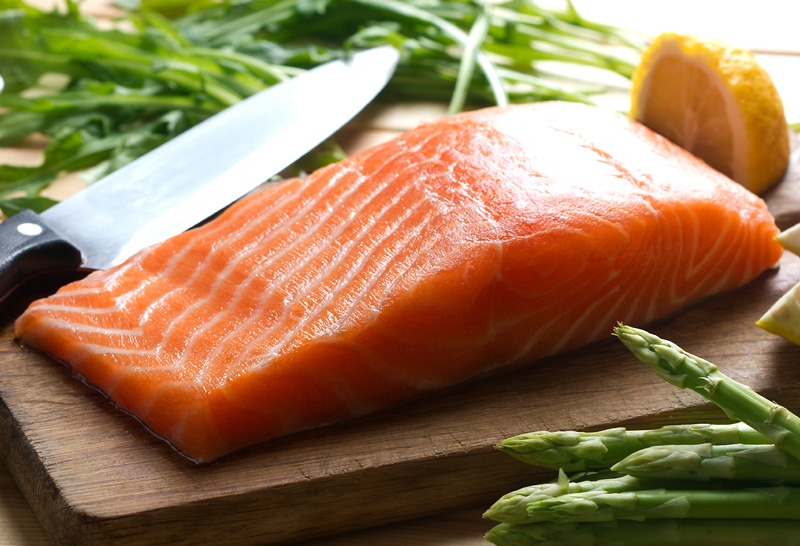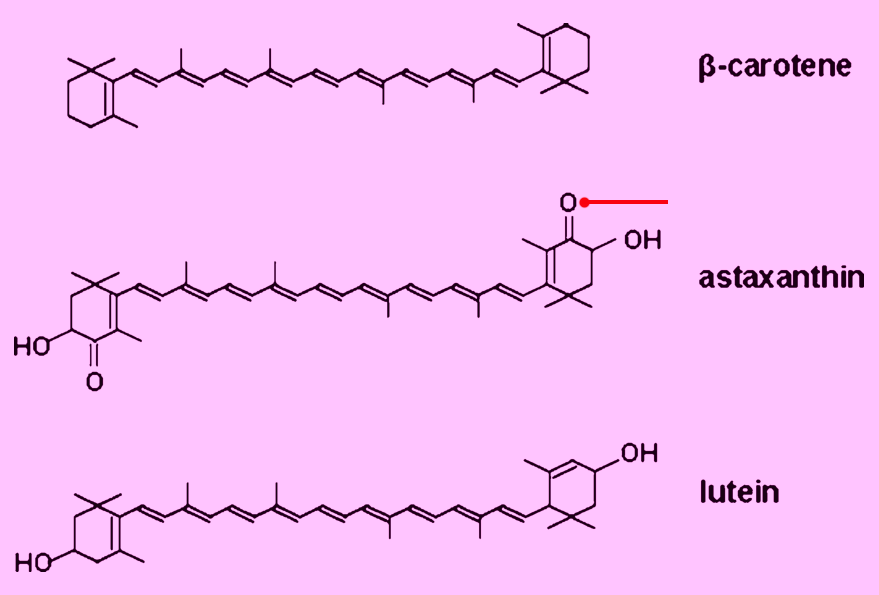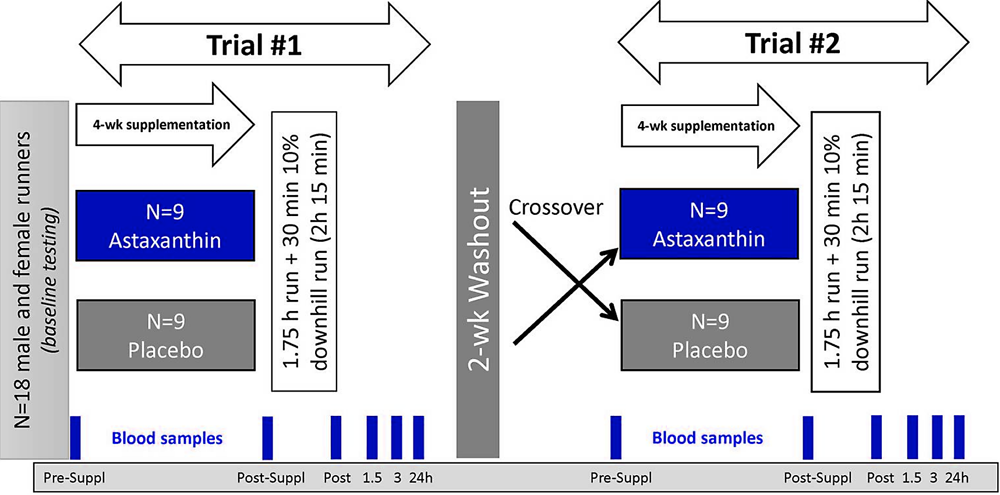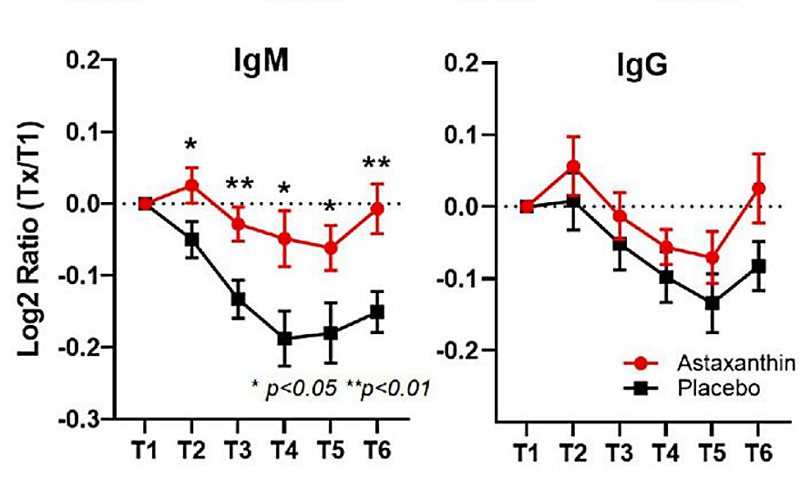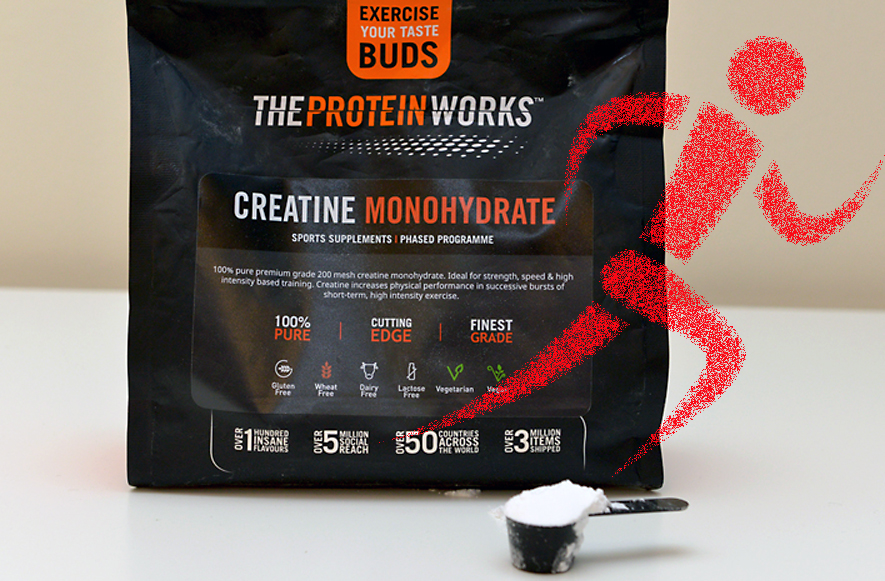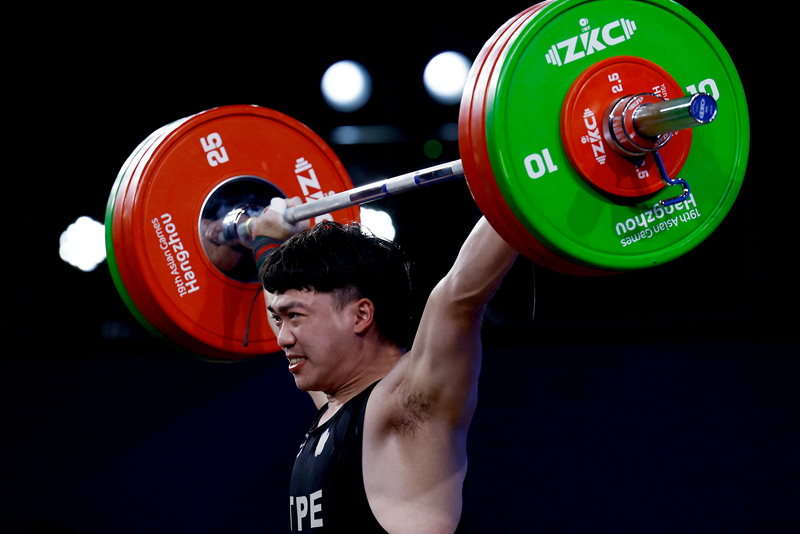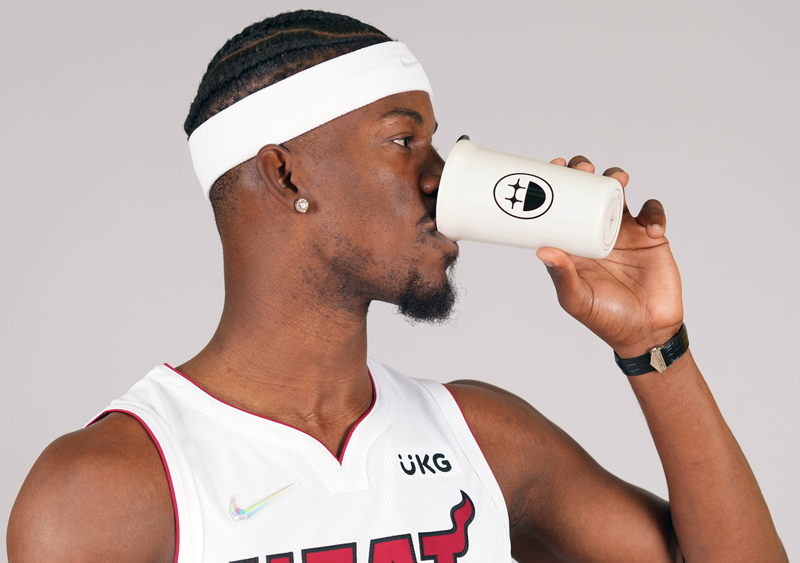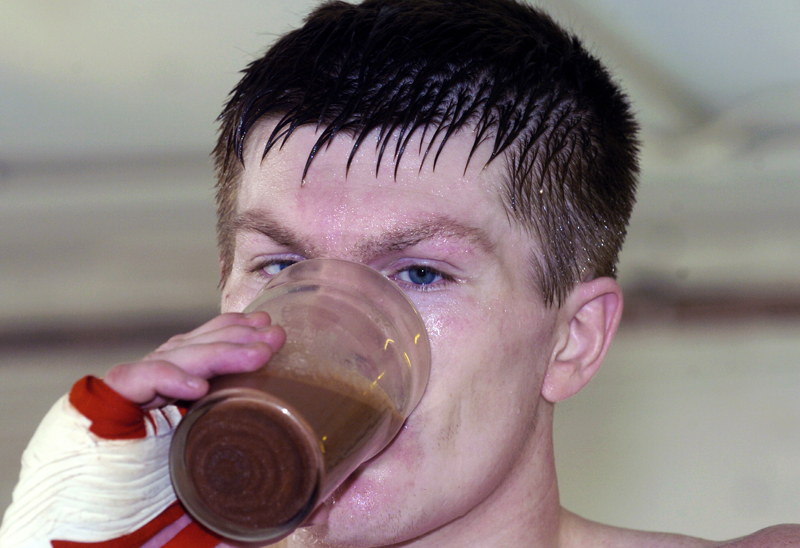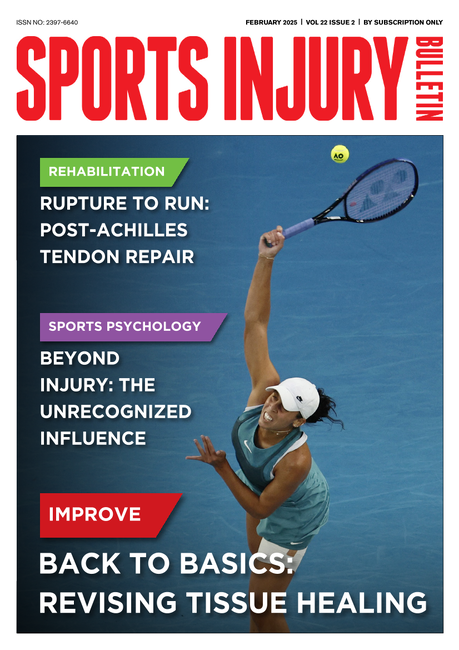You are viewing 1 of your 1 free articles. For unlimited access take a risk-free trial
Antioxidants for recovery: time to think pink?
Could an aquatic antioxidant help athletes recover faster while supporting immunity? SPB looks at new research
Chemically speaking, oxygen is amazing stuff. Its special reactivity provides us with the energy required to sustain life, including the ability to power movements and muscular contraction. This explains why oxygen - and the ability to absorb, transport and use it - is so important to athletes, who need lots of it to sustain maximum power and work outputs.
However, the oxygen molecule is a double-edged sword, because this same chemical reactivity can also wreak cellular havoc by means of the transient, highly reactive and potentially destructive molecular species called ‘free radicals’, which are produced unavoidably as a consequence of harnessing the chemical energy of oxygen within the body. Free radical damage (see box 1) is now believed to be a major factor in aging, degeneration and many other diseases associated with age(1).
Box 1: What is free radical damage?
Free radical damage describes the damage that occurs within cells - for example to cell membranes and DNA (see figure 1) - at a molecular level as a result of ‘free radicals’. These free radicals are fleeting but extremely reactive chemical species that unavoidably occur during oxygen metabolism when fats, proteins and carbohydrates are combined with oxygen in the body to produce energy (aerobic metabolism). For this reason they are sometime called ‘reactive oxygen species’ (ROS) or ‘oxygen radicals’.
Although our cells have very efficient antioxidant defence systems to quench and neutralise harmful free radicals, these systems are not 100% efficient, and over time biochemical damage gradually accumulates, leading to a reduction in cellular function. Most scientists now believe that accumulated cellular free radical damage lies at the heart of the ageing process and many degenerative diseases such as cancer, autoimmune diseases and Alzheimer’s disease.
Athletes process and use larger volumes of oxygen and at higher rates than the majority of the population; this explains why many scientists have assumed that they may benefit from higher intakes of antioxidant nutrients to bolster defences. Unsurprisingly perhaps, there are now dozens of antioxidant supplements on the market, some of which are aimed squarely at endurance sportsmen and women such as cyclists, runners, swimmers, triathletes etc. The reasoning is that these types of athletes might need greater antioxidant support because during long training sessions, their bodies process a lot more oxygen and generate more free radicals than the average couch potato.
Fortunately, the human body comes equipped with a number of systems capable of deactivating the free radicals produced as a result of oxygen metabolism, and dissipating their energy harmlessly. Collectively known as the ‘antioxidant defence system’, these systems use both antioxidant enzymes (large protein molecules manufactured in the body) and antioxidant nutrients (consumed in the diet) to mop up unwanted free radical activity and ‘soak up’ this potentially disruptive energy, thereby minimising damage to the body.
Athletes and antioxidants
In recent years, there has been much research into athletes, who not only consume more oxygen than others to fuel their training but also frequently train at or near their maximum oxygen uptakes, and who are at increased risk of free radical-induced damage, or ‘oxidative stress’(2,3). Athletes don’t just process a larger volume of oxygen than their sedentary counterparts – they also process it at a higher rate; during training, the rate of oxygen processing by the mitochondria (the energy producing furnaces in the cells) can rise by a factor of 20, placing exceptionally high demands on their antioxidant defence systems.
In particular, there’s been much interest in nutrients that can help bolster the body’s innate antioxidant defence systems (eg glutathione peroxidise, which requires the mineral selenium to function(4)) as well as nutrients that can boost antioxidant activity in their own right (for example, naturally occurring bright colored plant phytochemicals founds in a wide range of fruits and vegetables(5)).
Given the importance of optimum muscular performance for athletes, a lot of the research into antioxidant protection for athletes has focussed on the ability of antioxidant nutrients to help protect against muscle damage during hard training. This exercise-induced muscle damage often manifests as delayed-onset muscle soreness (DOMS) as well as delayed or reduced recovery from training and competition(6). In previous SPB articles, we have highlighted a range of these research findings, including:
• Reduced muscle soreness after shuttle running when taking vitamin C(7).
• Reduced exercise-induced DNA damage in immune cells in exercising women when taking vitamins C and E(8).
• Enhanced muscle damage repair in older runners running downhill when taking vitamin E(9).
• Lowered markers of free radical damage and boosted activity of protective antioxidant enzymes in the body when taking alpha lipoic acid and N-acetyl cysteine (NAC)(10).
• Reduced markers of free radical damage following exercise when runners took methylsulfonylmethane (often abbreviated to MSM)(11), when ultra-distance runners and climbers took coenzyme Q10(12) and when elite young footballers took astaxanthin (a naturally occurring pink-coloured compound found in yeast some fish/shellfish)(13).
Box 2: Fruity protection
In addition to antioxidant nutrients such as vitamins C and E, and the mineral selenium, there’s also been a lot of research into fruit phytochemical antioxidant supplementation to enhance athletic performance and recovery. In cyclists for example, black grape (81 grams per litre [g/L]), raspberry (93g/L) and redcurrant (39g/L) concentrates reduced DNA damage compared to cyclists not taking the fruit concentrates(14). Meanwhile, chokeberry juice reduced free radical damage in rowers undergoing strenuous exercise bouts(15) and tart cherry juice was found to reduce muscle damage and DOMS in distance runners performing a 26km (16.2-mile) run(16). Scientists believe that it’s the high levels of various natural phytochemical compounds (eg anthocyanins) found in berries and cherries that make these fruits particularly effective as antioxidants.
Something fishy
Eagle-eyed readers will have noticed that one of the antioxidant nutrients mentioned above is rather unusual in that it is neither a vitamin/mineral nor a plant phytochemical. Although it is a carotenoid compound and is therefore chemically related to the carotenoids beta-carotene and lutein found in orange and red vegetables such as carrots and tomatoes (see figure 1), astaxanthin is actually a dark-red carotenoid compound found in aquatic animals such as salmon and shrimp. Like plant phytochemicals, humans cannot synthesize astaxanthin and can only acquire it and benefit from it via dietary intake.
Figure 1: Astaxanthin, beta-carotene and lutein*
Astaxanthin belongs to the carotenoid family of compounds and is structurally very similar to beta-carotene and lutein found in orange and red fruits and vegetables, the main difference being the extra oxygen atom (marked by red pointer) on the carbon next to the OH group of lutein.
NB: Image adapted from Mercedes García-González "Outdoor cultivation of microalgae for carotenoid production: Current state and perspectives" Applied Microbiology and Biotechnology 2007. 74. 1163-74
As well as being found in shrimp and salmon natural astaxanthin can be extracted from an algae called Haematococcus pluvialis, which is the surce of astaxanthin used in supplements. Unlike beta-carotene in carrots and other fruits and vegetables, astaxanthin can’t be metabolized into vitamin A. On the flipside however, astaxanthin is more biologically active than other carotenoids such as zeaxanthin, lutein, and carotene in exerting beneficial antioxidant, immune-boosting and anti-inflammatory effects(17,18).
What’s special about astaxanthin?
Without delving into the chemistry too much, the key to astaxanthin’s special free radical neutralizing activity lies in its unique molecular structure, which has a high capacity to capture and render harmless free radicals containing oxygen and nitrogen atoms (reactive oxygen nitrogen species) by donating electrons and bonding with these free radical to form a non-reactive product(19).
Because of these unique chemical properties, scientists believe that astaxanthin helps protect muscle cell membranes in salmon during their long migrations by reducing exercise-induced damage in skeletal and heart muscle(20) In addition, astaxanthin seems to exert immune-boosting effects by augmenting immunoglobulin production, and enhancing natural killer and T lymphocyte responses to damaged or infected cells(21). In short, astaxanthin is believed to have the potential to limit/reduce the amount of free-radical-induced post-exercise inflammation as well as the immune dysfunction/suppression that is commonly observed following strenuous exercise (see this article)(22).
Astaxanthin and athletes
The question that you might be asking at this point is ‘can increasing my dietary intake of astaxanthin or taking a supplement help me’? It turns out that there have actually been a few high-quality randomized controlled studies on athletes performing prolonged and intensive exercise bouts and taking astaxanthin to investigate any potential benefits. However, the findings taken as a whole so far have been inconclusive – principally because these studies used such a wide range of dosing regimens, study designs and outcome measures (ie what kind of things were measured – eg fat loss, amount of DOMS, aerobic performance etc)(23-28).
To try and arrive at a more definitive conclusion, brand new research to investigate the physiological effects of astaxanthin supplementation on athletes has been undertaken by a team of US, Polish and Italian researchers using a new and powerful technique known as ‘proteomics’(29). Proteomics is the study of the set of proteins produced in response to a wide variety of stresses (in this case, exercise). The utilization of proteomics in human sports nutrition studies is an emerging science and is playing an important role in improving our scientific understanding of the complex interplay between exercise-and nutrition-related influences on immune and metabolic responses.
New research
Published in the journal ‘Frontiers in Nutrition’, this study examined the efficacy of a 4-week period of astaxanthin supplementation in moderating exercise-induced inflammation and immune dysfunction in runners performing a 2.25-hour run at 70%VO2max, which also included a 30-minute downhill section (to induce muscle damage and DOMS). In particular, the researchers carefully monitored the amount of damage and inflammation produced during each running trial; this was done by assessing blood levels of 42 different kinds of ‘oxylipins’ (chemical breakdown products when muscle cell walls are damaged during exercise) and no less than 82 different kinds of proteins associated with immune function (testing during the recovery periods.
How the research was done
This study employed a randomized, double blind, placebo controlled, crossover design (the most scientifically rigorous of study designs). Twenty-one male and female runners aged 18–57 years of age were recruited of which, 18 completed both trials. All the participants had to avoid supplements and medications such as non-steroidal anti-inflammatory drugs with a potential to influence inflammation and immune function during the study period. In addition, they also agreed to avoid foods and supplements containing astaxanthin during the 10-week study (other than what was provided) including dietary salmon, trout, shrimp, and crayfish.
The study design (see figure 2) consisted of two 4-week supplementation periods – one with astaxanthin and one with an inert placebo - with a 2-week ‘washout’ period in between (to ensure there was no residual effects of the astaxanthin supplement carried over from trial #1 to trial #2). Study participants were randomized to astaxanthin (8mgs – an amount known to significantly increase plasma astaxanthin in human subjects(30)) and placebo (which looked identical) trials, with these supplements ingested daily for four weeks prior to running 2.25 hours at close to 70%VO2max (including 30 minutes of 10% downhill running). After the washout period, participants repeated all the same procedures using the counterbalanced supplement (ie those who had taken astaxanthin in trial 1 now took the placebo in trial 2 and vice-versa).
Figure 2: Astaxanthin study design
Related Files
What they found
The key findings were as follows:
· The 2.25-hour running task induced significant muscle soreness, muscle damage, and inflammation in both the astaxanthin and placebo trials, with no significant differences between the two (ie the astaxanthin didn’t reduce soreness or inflammation).
· The similar amount of muscle damage and soreness observed in both the trials was reflected by a similar increase in levels of blood cytokines and oxylipins.
· When it came to immune markers however, the differences were stark; when the runners took astaxanthin, it helped prevent exercise-induced decreases in all 82 of the blood proteins analyzed during the 24hour recovery period. Further analysis revealed that most of these proteins were involved in immune-related functions such as immune defense responses, immune complement activation (a part of the immune system that enhances complements the ability of antibodies and other immune cells to lock onto and destroy pathogens within cells), and humoral immunity (the ability of B-cells to recognize and respond to pathogens circulating freely).
· The final finding was that blood levels of an antibody called IgM (a type of antibody that is first to appear in the response to initial exposure to a virus or bacteria - ie initial line of defense) decreased significantly post-exercise in both trials. However, while IgM fully recovered after the 24-hour post-exercise recovery period in the astaxanthin trial, it remained at low levels in the placebo trial, even after 24 hours of recovery (see figure 3). A similar trend was also noted for another type of immune antibody called IgG, although the differences here were not quite large enough to be considered statistically significant.
Figure 3: Changes of blood IgM and IgG levels in astaxanthin and placebo trials
Red = astaxanthin; black = placebo. 0 = pre-trial levels, t6 shows IgM and IgG levels 24 hours post exercise. IgM was significantly depressed in the placebo trial 24 hours after exercise whereas in the astaxanthin trial, IgM recovered fully, indicating superior immune protection. A similar trend was seen in IgG levels although it didn’t quite reach statistical significance.
Practical implications for athletes
The surprising finding from this study was that contrary to expectations, taking astaxanthin did not seem to reduce markers of muscle damage or inflammation. However, while some previous studies have suggested that astaxanthin might help in this respect, these studies used markers of oxidative damage and inflammation, rather than actually measuring amounts of damaged cell fragments directly using oxylipins (as this study did). In plain English, taking an astaxanthin supplement or increasing astaxanthin intake via diet will likely not reduce muscle inflammation and soreness after hard or prolonged training.
The more interesting finding however is that astaxanthin seems to exert a powerful ‘immune protecting’ effect by helping to offset the normal post-exercise decline in immunity that is so often seen in athletes. This post-exercise dip in immunity enhances an athlete’s susceptibility to infection, particularly viral infections such as coughs, colds, sore throats and chest infections(31,32). In particular, astaxanthin seems to mitigate the decline in the all-important IgM antibody response, which is the first line of defense when the body encounters a virus. An effective IgM response is important for preventing viruses entering the body from taking hold and causing infection and illness!
Boosting astaxanthin
Given the above, astaxanthin-rich foods or supplementation may be a very useful tool for keeping your immune system in tip-top condition during periods of hard training or competition. There are a number of fish and shellfish that contain useful dietary levels of astaxanthin. These include salmon, red trout, lobster, crab, shrimp, crawfish and red seabream. Of these foods, salmon is probably most accessible and affordable for most athletes. However, it’s hard to know exactly how much astaxanthin these foods contain, and certain varieties also tend to be expensive additions to the diet, especially if eaten regularly.
For that reason, supplementation is another option, and one that may be more affordable if you don’t have ready access to the seafoods listed above. As per this study, a dose of around 8mgs of astaxanthin per day is recommended and you should allow a few weeks for blood and tissue levels to rise in order to experience the benefits. When purchasing, look for a brand that uses natural astaxanthin derived from microalgae rather than synthetic forms of astaxanthin, which may be less biologically effective. Another alternative is a krill oil supplement provided the astaxanthin content is stated.
There are no benefits documented of increasing the daily dose beyond 8mgs per day so don’t worry about taking more than this amount (very high doses can lead to unwanted side effects such as tummy pain and loose stools anyway). Finally, female athletes who are pregnant or are breastfeeding should probably stick to dietary sources of astaxanthin since although a very safe supplement, there’s little safety data on the use of astaxanthin in supplemental form in this cohort.
References
1. Int J Food Sci Nutr. 2013 May;64(3):312-26
2. Int J Food Sci Nutr. 2013 May;64(3):312-26
3. Exerc Immunol Rev. (2017) 23:8–50
4. Nutrients. 2020 Jun 16;12(6):1790.
5. J Am Coll Nutr. 2011 Oct;30(5):285-94
6. Front Physiol. 2018 Apr 26;9:403
7. Int J Sport Nutr Exerc Metab 2001, 11(4): 466-81
8. Free Radic Biol Med 2004, 36(8): 966-75
9. Am J Physiol 1990;259:R1214–9
10. J Physiol Sci. 2007 Dec;57(6):343-8
11. J Sports Med Phys Fitness. 2012 Apr;52(2):170-4
12. Eur J Nutr. 2012 Oct;51(7):791-9
13. J Sports Med Phys Fitness. 2012 Aug;52(4):382-92
14. Eur J Appl Physiol. 2005 Dec;95(5-6):543-9
15. Int J Sport Nutr Exerc Metab 2005. 15(1): 48-58
16. J Int Soc Sports Nutr. 2010 May 7;7(1):17
17. Food Chem. (2021) 343:128497
18. Molecules. (2020) 25:5342
19. Food Chem. (2021) 343:128497
20. Nutrients. (2021) 14:107.
21. Nutr Metab (Lond). (2010) 7:18
22. Annu Rev Food Sci Technol. (2019) 10:341–63
23. Int J Sport Nutr Exerc Metab. (2022) 32:8–15
24. Front Nutr. (2018) 4:76
25. Front Sports Act Living. (2019) 1:17
26. PLoS One. (2013) 8:e79280
27. J Sports Med Phys Fitness. (2012) 52:382–92
28. Phytother Res. (2013) 27:1536–42
29. Front Nutr. 2023; 10: 1143385. Published online 2023 Mar 21
30. Nutr Metab (Lond). (2010) 7:18
31. Brain. Behav. Immun. 2009;22:590–599
32. Brain. Behav. Immun. 2009;23:232–239
Newsletter Sign Up
Testimonials
Dr. Alexandra Fandetti-Robin, Back & Body Chiropractic
Elspeth Cowell MSCh DpodM SRCh HCPC reg
William Hunter, Nuffield Health
Newsletter Sign Up
Coaches Testimonials
Dr. Alexandra Fandetti-Robin, Back & Body Chiropractic
Elspeth Cowell MSCh DpodM SRCh HCPC reg
William Hunter, Nuffield Health
Keep up with latest sports science research and apply it to maximize performance
Today you have the chance to join a group of athletes, and sports coaches/trainers who all have something special in common...
They use the latest research to improve performance for themselves and their clients - both athletes and sports teams - with help from global specialists in the fields of sports science, sports medicine and sports psychology.
They do this by reading Sports Performance Bulletin, an easy-to-digest but serious-minded journal dedicated to high performance sports. SPB offers a wealth of information and insight into the latest research, in an easily-accessible and understood format, along with a wealth of practical recommendations.
*includes 3 coaching manuals
Get Inspired
All the latest techniques and approaches
Sports Performance Bulletin helps dedicated endurance athletes improve their performance. Sense-checking the latest sports science research, and sourcing evidence and case studies to support findings, Sports Performance Bulletin turns proven insights into easily digestible practical advice. Supporting athletes, coaches and professionals who wish to ensure their guidance and programmes are kept right up to date and based on credible science.
